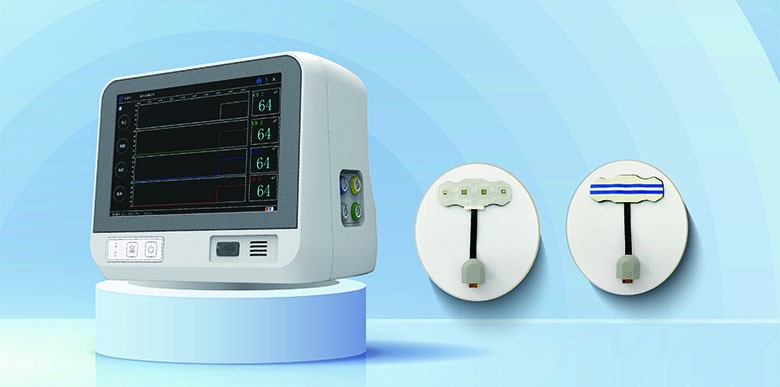"Non invasive accurate monitoring of cerebral blood oxygen" is a necessary product for intraoperative monitoring of Yi Kangda Medical
2024-03-25 16:26:27 Source: Today's Hotspot
Importance of cerebral blood oxygen monitoring
The brain is the organ with the most active energy metabolism, the largest oxygen demand and oxygen consumption, and the smallest oxygen reserve. The brain is highly sensitive to ischemia and hypoxia. Prolonged hypoxia can cause irreversible nerve damage. Cerebral oxygen saturation is a parameter reflecting the blood oxygen content in the brain, which can evaluate the balance of oxygen metabolism in brain tissue, and then discover the imbalance of cerebral oxygen supply and demand in time.
Accurate monitoring of cerebral oxygen saturation is widely needed in clinical practice. For high-risk, extracranial and extracranial large blood vessel and heart surgery patients, real-time intraoperative cerebral oxygen monitoring can optimize the maintenance strategy of intraoperative brain function and reduce postoperative cognitive and neurological damage; Monitoring of patients with fragile brain function in neurology department, neurosurgery department and ICU can timely detect cerebral hypoperfusion and intervene to avoid irreversible cerebral ischemic events; Monitoring the newborn can objectively and accurately assess hypoxic-ischemic encephalopathy, and early intervention can promote the recovery of children.
Accurate monitoring of cerebral oxygen saturation is the prerequisite for clinical development of brain protection strategies. Yi Kangda Medical has long focused on near-infrared spectrum blood oxygen detection research, focusing on key technologies such as weak tissue reflection/transmission optical signal measurement technology, accurate inversion of optical blood oxygen physiological parameters, resolution of overlapping spectral signals, and has accumulated a lot of experience. After years of research and development, The first domestic dual light source four wavelength cerebral blood oxygen monitor based on near-infrared spectroscopy technology was successfully developed, and the medical device registration certificate was recently approved. The non-invasive cerebral blood oxygen monitor can directly reflect the changes of brain oxygen supply and demand balance, and has the characteristics of simple operation, sensitive response, rapid and real-time monitoring.
Compared with other cerebral blood oxygen monitoring equipment on the market, the cerebral blood oxygen monitoring equipment launched by Yikangda Medical has the following advantages:
1、 Advanced weak light detection and calculation technology
1) The first four wavelength dual light source cerebral blood oxygen sensor in China has minimized the interference of extracranial factors and realized simultaneous calculation of up to 16 light paths;
2) With the structure of double light source butterfly light path, under the premise that the total length of the sensor is basically unchanged, the detection linear distance is increased from 40mm to 60mm to obtain a larger detection area;
3) The quantitative algorithm of brain tissue differential path factor and the quantitative algorithm of spatial resolution blood oxygen saturation realize the absolute quantification of multiple parameters including brain tissue blood oxygen saturation and hemoglobin concentration index;
4) It integrates three key core technologies, namely, high sensitivity and fast acquisition, dynamic amplification of small signals, and automatic evaluation of signal quality.
2、 Ultra high refresh rate, responsive
The fastest refresh rate is ≤ 100ms, which is highly sensitive and rapid response to intraoperative cerebral ischemia and hypoxia events. "Real time measurement, immediate measurement" enables intraoperative ultra fast measurement.
3、 Good use experience
1) Intelligent reminding of sensor status;
2) Intelligent alarm prompt;
3) Multi channel simultaneous monitoring, superior anti-interference performance.

Non invasive cerebral blood oxygen monitor
Application scenario: It is used for intraoperative monitoring of high-risk, extracranial large vessels and cardiac surgery patients, optimizing intraoperative brain function maintenance strategies, and reducing postoperative cognitive and neurological damage; Monitor patients with fragile brain function in neurology department, neurosurgery department and ICU, find out brain hypoperfusion in time and intervene to avoid irreversible cerebral ischemia events; Objective and accurate assessment of neonatal hypoxic-ischemic encephalopathy, early intervention to promote the recovery of children.
The non-invasive monitoring technology of cerebral blood oxygen has been recommended by several clinical guidelines and consensus of experts. It is an essential product for intraoperative monitoring of cerebral blood oxygen saturation and has broad application prospects. Through cerebral oxygen saturation monitoring, the balance of cerebral blood oxygen supply and demand in the perioperative period can be grasped in real time, and the decline of cerebral blood oxygen saturation can be found in time to reduce the neurological damage in the perioperative period, Escort operation anesthesia.

Clinical application site map
key word:







